A cellar in a private house is an additional storage area and a place to place equipment that serves the house. In a word, the basement can be used for different purposes. The main thing is that it be dry, but just this condition is not feasible for everyone. And there are reasons for that. We will talk about them today, and at the same time about how to dry the cellar if dampness has settled in it.
Read in the article
- 1 Why is the cellar damp
- 2 Conditions under which there will be no dampness
- 3 How to prepare the cellar for drying
- 4 Secrets of natural drying of a damp cellar
- 5 What must be done after natural drying
- 6 Artificial ways to effectively dry the cellar
- 6.1 Brazier and potbelly stove
- 6.2 Drying with candles
- 6.3 Drying the cellar with electric heaters
- 7 How to protect the cellar from moisture from the inside
Why is the cellar damp
Dampness in the basement can have several causes. You should find which of the options suits your situation:
- Insufficient or no ventilation at all. This problem has its roots in design errors at the construction stage. If the ventilation ducts were not initially laid, it is quite difficult to fix it later, when the house is already built. Or, alternatively, even if ventilation was provided, but the builders clogged the vents with construction debris or laid the slabs incorrectly - expect problems.PHOTO: stroitelstvo-gid.ru
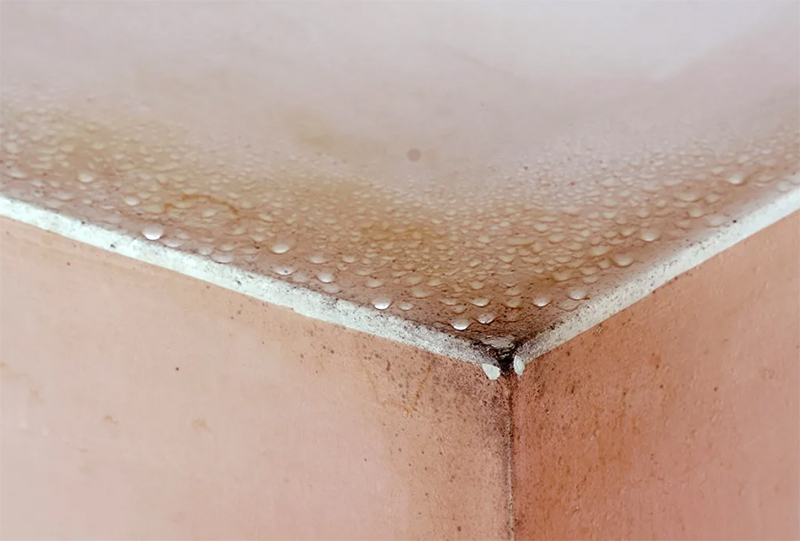
Even if groundwater or other external moisture does not penetrate into the basement, condensation will form due to the temperature difference. It settles on the walls and ceiling in drops and leads to unpleasant consequences. - Changes in the groundwater level can lead to humidity in the buried room. Usually the problem is seasonal and worsens in autumn and spring. In the absence of competent drainage, water penetrates into the basement, and from there it has nowhere to go, so dampness arises.
- The presence of cracks and crevices in the foundation can cause moisture to enter the cellar. This is no longer just a problem that threatens the safety of the contents of your cellar, but a serious warning to the owner about the need for a major overhaul of the entire house. Otherwise, collapse may even occur.
And what, in fact, dampness prevents the owners? Maybe it's not so scary after all? The most unpleasant consequence of high humidity is the growth of fungus. As you know, mushrooms are the most tenacious creatures on this planet, and it is very difficult to breed them.

Dampness leads to intense corrosion of metals, and this is not only rusty lids on your home canned food, but also damaged metal parts of the structure.
Conditions under which there will be no dampness
Of course, there are such conditions, and they largely depend on the conscientiousness of developers. In a well-designed and built house, the basement will not be damp, even if the groundwater puddles on the site during the season.
First of all, the use in the construction of the foundation and plinth of modern high-quality concrete from M400, which does not conduct water in any form. Yes, this will lead to additional costs, but these costs will pay off later during the operation of the building.
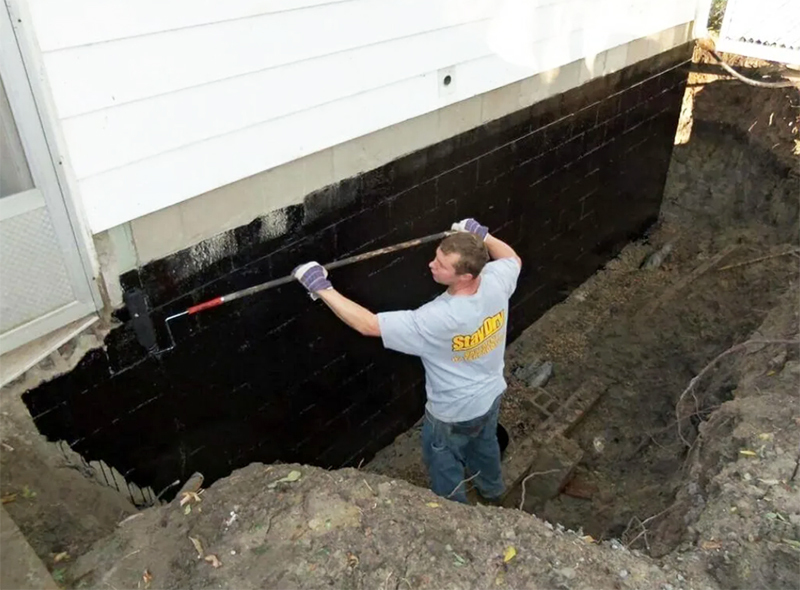
In areas that are subject to flooding during the season, it is necessary to install a drainage system. So you save not only your house, but also other buildings, and the garden from the harmful effects of stagnant moisture. This is especially true for areas located on slopes, along which rainwater flows.
To protect the foundation and cellar, the house must have a high-quality blind area, which will divert rainwater flowing from the roof to a safe distance.
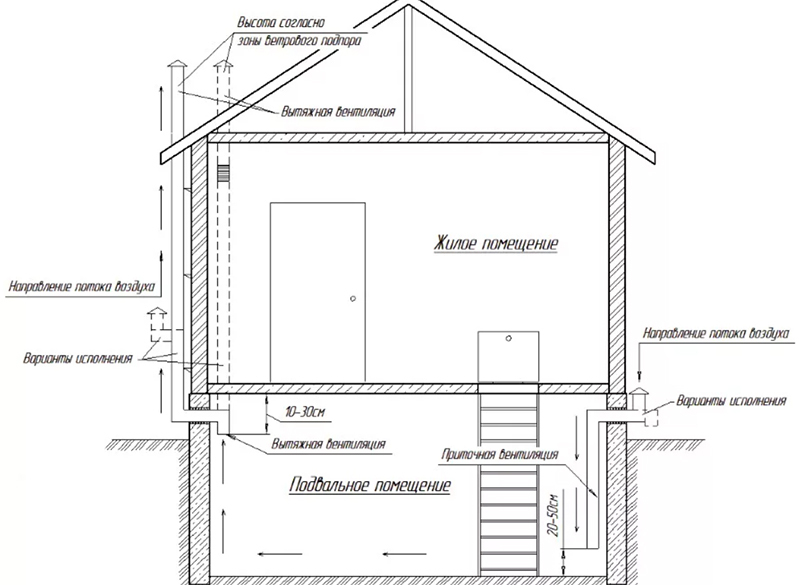
Separately, it must be said about the arrangement of floors in the cellar. Yes, surprisingly, not only the walls and ceiling are of great importance in matters of regulating the humidity in the cellar, but also the floors. For example, an existing earthen floor (and this is done in most cases to save money) itself can cause increased humidity in the cellar. It is a kind of conductor of ground moisture.
This problem is solved relatively simply - by covering with a waterproofing film or (better) a membrane that conducts moisture only in one direction. Often such a simple action solves the whole problem at once. In order not to damage the film when moving around the cellar, place wooden shields on it - it can even be construction pallets.
How to prepare the cellar for drying
So, you acknowledged the existence of a problem and the need to solve it. How to dry the basement in a private house? First of all, it is best to start drying in the summer, when good weather and summer warmth volunteer to help you. There are, of course, hopeless situations. For example, if water has accumulated in the cellar after flooding. In this case, it's best not to wait. Keep in mind that it is unlikely that it will be possible to correct the situation in a couple of days. In any case, draining will take time - from a week to a month and a half, depending on the circumstances.
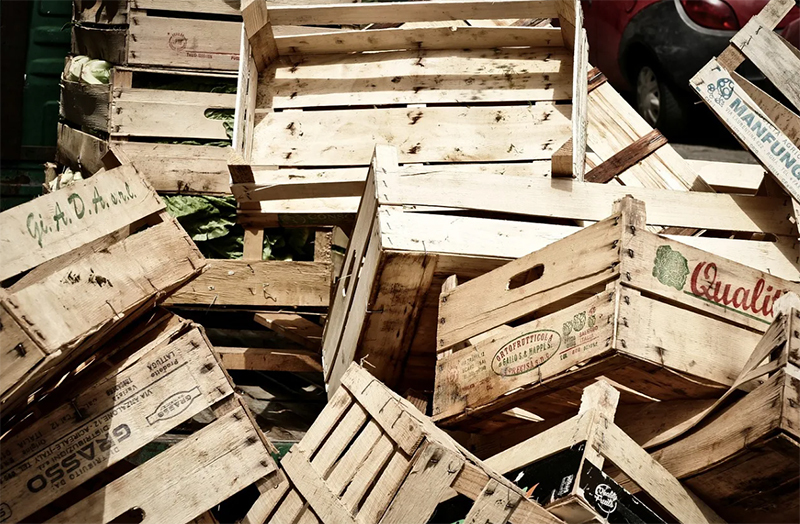
Racks, boxes, pallets, boxes - all this must be taken out of the underground in the sun and left to dry completely. And after the tree dries - treat it from the fungus. If the mold has already appeared, good results are obtained by firing with a blowtorch, followed by treatment with an antiseptic and a protective composition.
Secrets of natural drying of a damp cellar
To dry naturally, you need to not only open the hatch or doors in the garage or house, but also organize a draft. That is, open the door to the house or windows, respectively, so that the dampness quickly disappears. Be sure to clean the ventilation (if any). It is possible that in it you will find some surprises like dead rodents or fallen leaves.
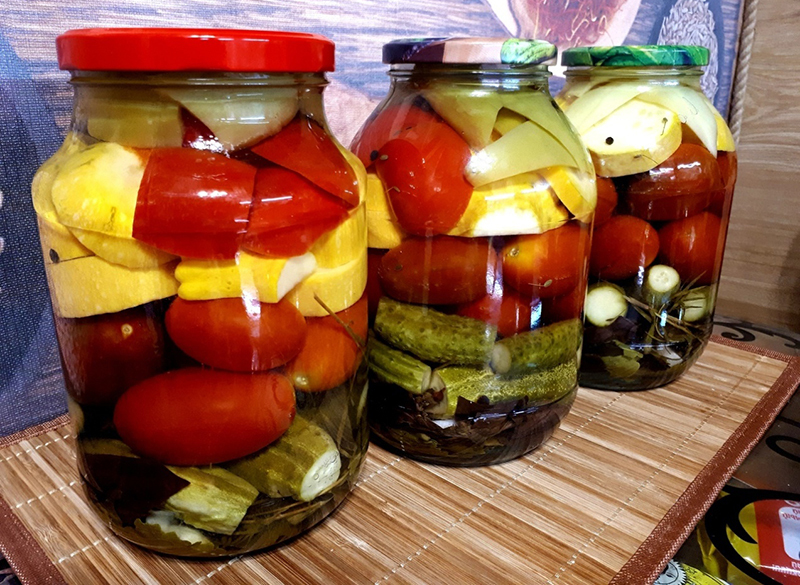
When the basement naturally dries out, there may be a problem with heavy stagnant air. To increase the inflow, burning paper is placed in the ventilation duct. Hot air will rush out, dragging the musty atmosphere of the cellar with it.
If there is condensation on the walls of the cellar, not only hand wiping will help speed up the drying process absorbent materials, but also the placement of a moisture-absorbing agent in the cellar, which will absorb excess moisture from air. It can be a bag of fine sawdust, a container of lime or ordinary rock salt. In general, it is desirable to constantly keep such an absorber in the basement, and not only during drying, and periodically change it.
What must be done after natural drying
After the basement dries out, it is necessary to process its walls from traces of the fungus. First you need to remove the fungus mechanically - with a scraper or brush. Be sure to use a respirator for this work! Mold spores that enter the lungs can cause extremely unpleasant consequences.
Then it would be nice to disinfect the cellar with a sulfur checker. This method will allow you to get rid of not only mold, but also from domestic rodents. For processing with a sulfur checker, you need to leave the basement, tightly close the door and ventilation inlets, sealing them with rags. After processing (not earlier than a week later), you can fill the cellar again.
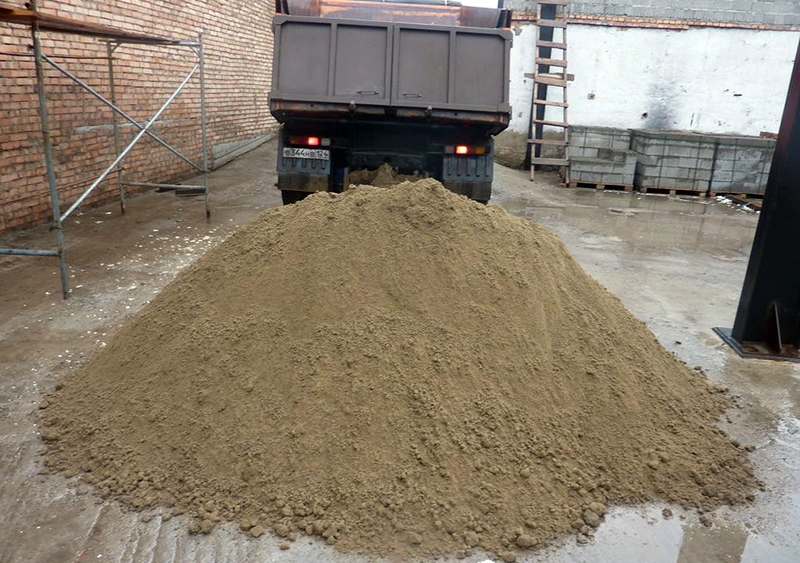
A good preventive result is whitewashing the walls with lime. It is diluted quite thickly and about 10% of copper sulfate is added to the composition.
Artificial ways to effectively dry the cellar
In the absence of a ventilation system, it is rather difficult to dry the cellar naturally, so forced methods will have to be used. They will also come in handy if you have an emergency and there is no way to wait for warm summer weather.
Brazier and potbelly stove
It's not about any special device. It can be any improvised option, even an old bucket in which you can light firewood. The only condition is the presence of traction, and for this the bucket must be placed on bricks and a hole must be made in it from below for air to enter.
It goes without saying that the doors to the basement will have to be opened, and one must be extremely careful, especially if some wooden objects remain in the basement, which, in addition to your will, can become a source of fire. The brazier itself must be placed strictly in the center so that the heat is evenly distributed throughout the room.

The smoke from the brazier will also serve as a prophylactic, driving out insects and rodents, destroying the fungus.
Experienced summer residents are advised to use linden or birch logs for such drying, the smoke from which has special disinfecting qualities. And remember: in no case should you be in such a room all the time. Not more than a minute, and only in order to throw firewood, and then with a safety net and a respirator.
Drying with a potbelly stove is also possible, but it is imperative to bring the hood out, at least into the vent.
Drying with candles
Very simple and, one might even say, an ancient way. The only condition is that there must be an exhaust hood in the basement. Candles are placed in tin cans and placed near the hood. Hot air begins to quickly rush to the exit, accelerating the ventilation of the room.
Paraffin candles can be replaced with dry fuel, which, by the way, when burned, also releases into the air substances that destroy mold.
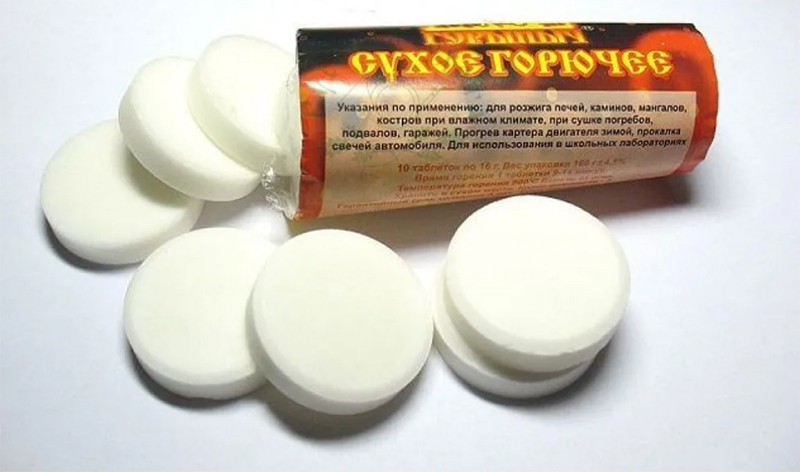
Drying the cellar with electric heaters
Not the cheapest method, but if there is no alternative, then you can dry the basement with the help of electrical appliances. Any options will do: oil, air heater, infrared lamp, fan heater, gun. The duration of operation of the devices depends on the degree of dampness, sometimes it will take up to 10 days for complete drying.
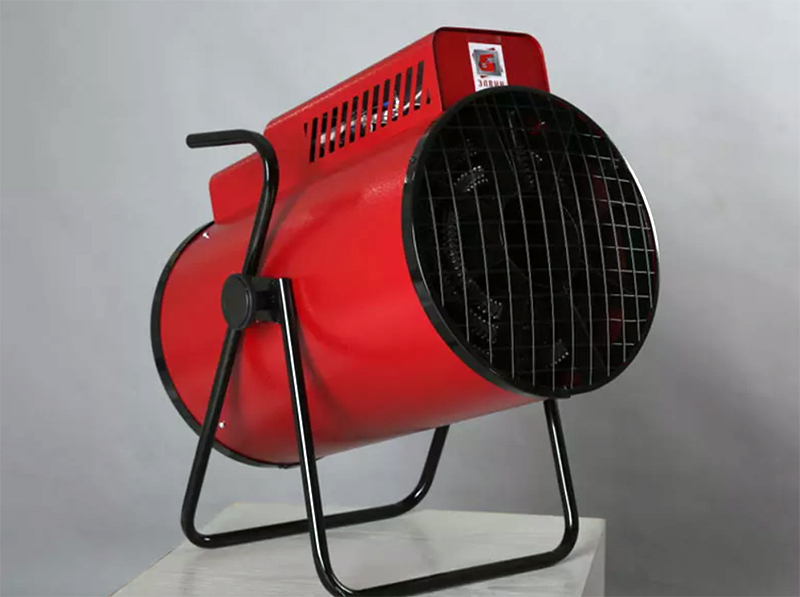
You can speed up drying with the help of electrical appliances by installing a fan in the cellar, which will intensively drive hot air around the room.
How to protect the cellar from moisture from the inside
We talked about the fact that with proper construction, humidity in the cellar, in principle, should not appear. But what if you bought an already finished building and you can’t fix anything outside?
Waterproofing from the inside is not the best solution, but forced. It is easy to make, and there are several options available:
- Penetrating waterproofing. Consists of chemically active components that are hazardous to health, so treat the walls such solutions should be in a respirator and immediately after treatment, leave the room until completely dry composition. The advantage of this method is the preservation of the natural ventilation of concrete. Before applying penetrating ventilation, it is imperative to clean the walls of dust and old coatings. This type of waterproofing can last half a century.
- Coating sealants. Unlike penetrating, they are thicker, usually applied not with a brush, but with a spatula. The best results are shown by two-component typical formulations. Often, polymeric bituminous mastics are used for waterproofing.
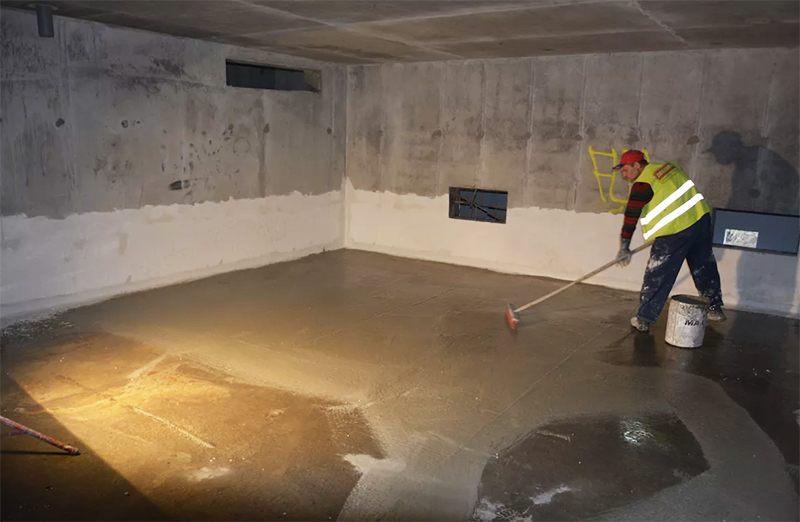
Wall treatment is not the only way to waterproof a basement. Ideally, you need to combine it with the installation of internal drainage, especially if the cellar has a large area.
For internal drainage, a trench half a meter deep is dug around the perimeter of the room, geomaterial is laid in it and fine gravel is poured to the bottom. Drainage pipes are placed on top of the gravel at a slight slope, then the pipes are covered with gravel, and the trench itself with sand. At the lowest point of drainage, a plastic barrel is dug into the ground, which periodically needs to be emptied manually or with a pump.
For more information on draining the cellar, you can learn from this video:
Have you ever had to deal with similar problems? Share your experience in the comments!
Guys, it's not complete. You don't mention Domorost, but still these guys have a problem...
Hello, thank you for the informative information. Health to you and your loved ones. Sk…
From strong winds, fences sometimes fall if they are installed unreliably. We have our own at Terem-p ...
We bought a summer cottage with a dilapidated country house. They restored it through the tower. AND …
The tm film and the zebra have nothing to do with PLEN, do not mislead people ...
We need this Vodonaeva with her cats like fifth leg dogs.
I need to make a Christmas tree out of cardboard for the office. If you do this please give me a call...
Don't chase the blizzard... In your opinion, all the great writers were prostitutes. Go...
Hello! And how can you make a cone planter for flowers, or rather, how to fasten the cone?
Four days ago I ordered a Revolts heating kit for our dacha. I'm going to pick up tomorrow...
If the apartment is ready, then why doesn’t Buzova broadcast to the whole world about moving and living ...
Like 10m. Enough tape for 1.5m of fence?!
This is most likely an Internet modem like yota. And, I remember, they used both polarizers ...



